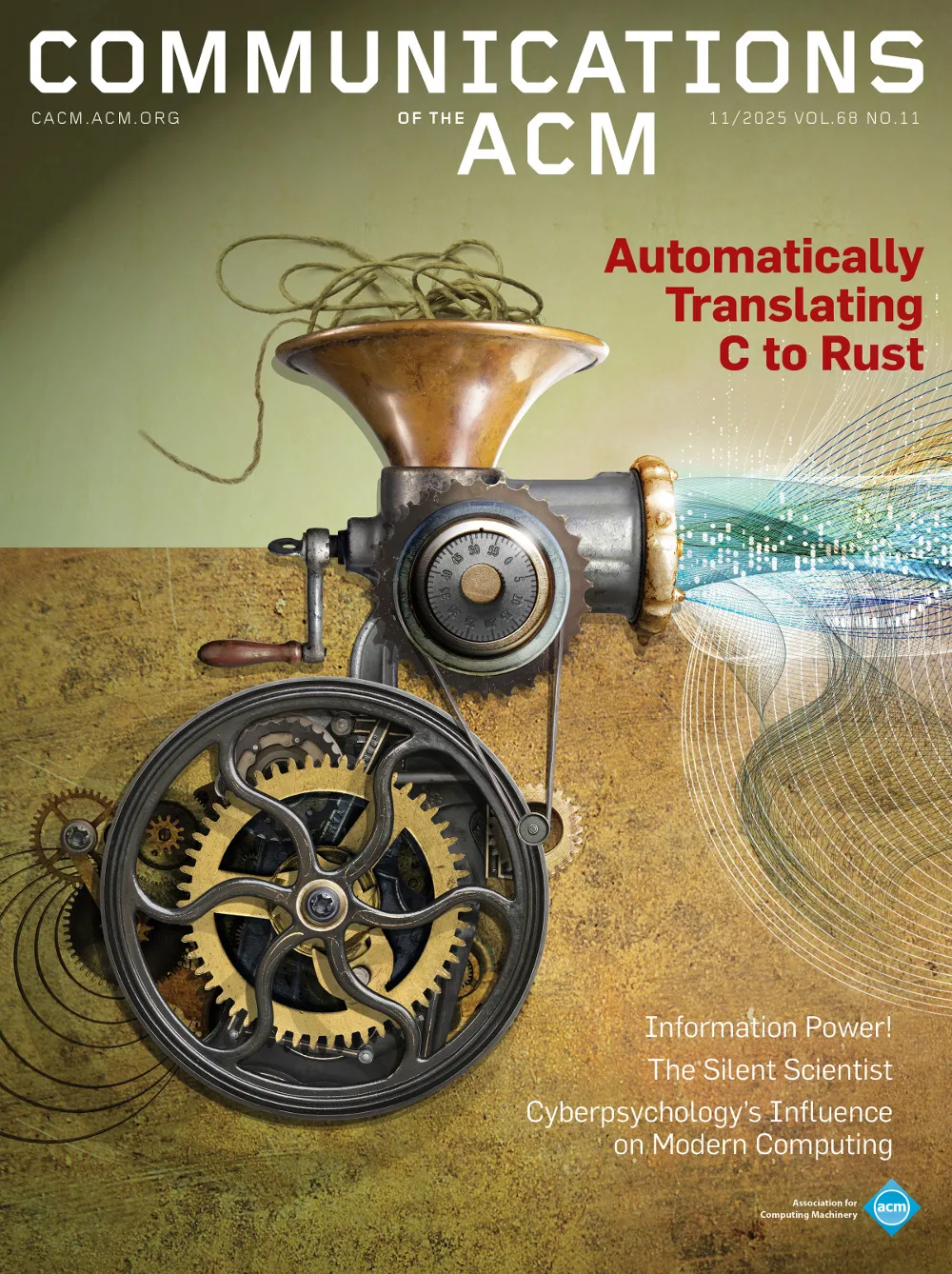September 1977 - Vol. 20 No. 9

Features
The framework for research in the theory of complexity of computations is described, emphasizing the interrelation between seemingly diverse problems and methods. Illustrative examples of practical and theoretical significance are given. Directions for new research are discussed.
Logic and programming languages
Logic has been long interested in whether answers to certain questions are computable in principle, since the outcome puts bounds on the possibilities of formalization. More recently, precise comparisons in the efficiency of decision methods have become available through the developments in complexity theory. These, however, are applications to logic, and a big question is whether methods of logic have significance in the other direction for the more applied parts of computability theory.
Programming languages offer an obvious opportunity as their syntactic formalization is well advanced; however, the semantical theory can hardly be said to be complete. Though we have many examples, we have still to give wide-ranging mathematical answers to these queries: What is a machine? What is a computable process? How (or how well) does a machine simulate a process? Programs naturally enter in giving descriptions of processes. The definition of the precise meaning of a program then requires us to explain what are the objects of computation (in a way, the statics of the problem) and how they are to be transformed (the dynamics).
So far the theories of automata and of nets, though most interesting for dynamics, have formalized only a portion of the field, and there has been perhaps too much concentration on the finite-state and algebraic aspects. It would seem that the understanding of higher-level program features involves us with infinite objects and forces us to pass through several levels of explanation to go from the conceptual ideas to the final simulation on a real machine. These levels can be made mathematically exact if we can find the right abstractions to represent the necessary structures. The experience of many independent workers with the method of data types as lattices (or partial orderings) under an information content ordering, and with their continuous mappings, has demonstrated the flexibility of this approach in providing definitions and proofs, which are clean and without undue dependence on implementations. Nevertheless much remains to be done in showing how abstract conceptualizations can (or cannot) be actualized before we can say we have a unified theory.
The GRE advanced test in computer science
This report describes the Advanced Test in Computer Science which was recently introduced in the Graduate Record Examination Program. The GRE program is described in general, and, the events leading to the establishment of the Advanced Computer Science Test are discussed. Content specifications and their rationale are given. A set of sample questions is included.
An analysis of inline substitution for a structured programming language
An optimization technique known as inline substitution is analyzed. The optimization consists of replacing a procedure invocation by a modified copy of the procedure body. The general problem of using inline substitution to minimize execution time subject to size constraints is formulated, and an approximate algorithmic solution is proposed. The algorithm depends on run-time statistics about the program to be optimized. Preliminary results for the CLU structured programming language indicate that, in programs with a low degree of recursion, over 90 percent of all procedure calls can be eliminated, with little increase in the size of compiled code and a small savings in execution time. Other conclusions based on these results are also presented.
Hardware estimation of a process’ primary memory requirements
A minor hardware extension the Honeywell 6180 processor is demonstrated to allow the primary memory requirements of a process in Multics to be approximated. The additional hardware required for this estimate to be computed consists of a program accessible register containing the miss rate of the associative memory used for page table words. This primary memory requirement estimate was employed in an experimental version of Multics to control the level of multiprogramming in the system and to bill for memory usage. The resulting system's tuning parameters display configuration insensitivity, and it is conjectured that the system would also track shifts in the referencing characteristics of its workload and keep the system in tune.
Some new upper bounds on the generation of prime numbers
Given an integer N, what is the computational complexity of finding all the primes less than N? A modified sieve of Eratosthenes using doubly linked lists yields an algorithm of OA(N) arithmetic complexity. This upper bound is shown to be equivalent to the theoretical lower bound for sieve methods without preprocessing. Use of preprocessing techniques involving space-time and additive-multiplicative tradeoffs reduces this upper bound to OA(N/log logN) and the bit complexity to OB(N logN log log logN). A storage requirement is described using OB(N logN/log logN) bits as well.
Pagination of B*-trees with variable-length records
A strategy is presented for pagination of B*-trees with variable-length records. If records of each length are uniformly distributed within the file, and if a wide distribution of record lengths exists within the file, then this strategy results in shallow trees with fast access times. The performance of this strategy in an application is presented, compared with that of another strategy, and analyzed.



